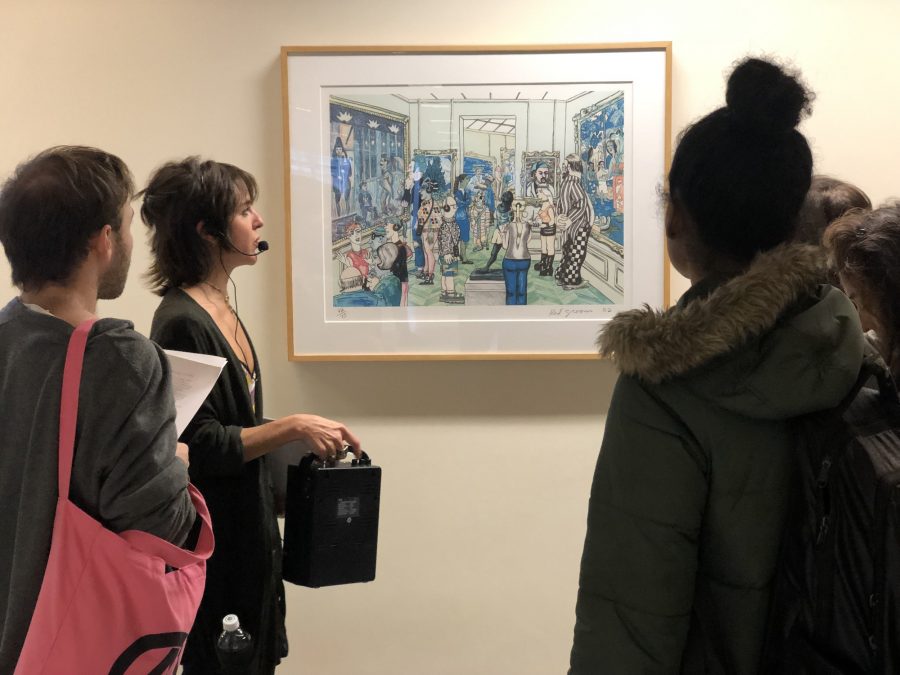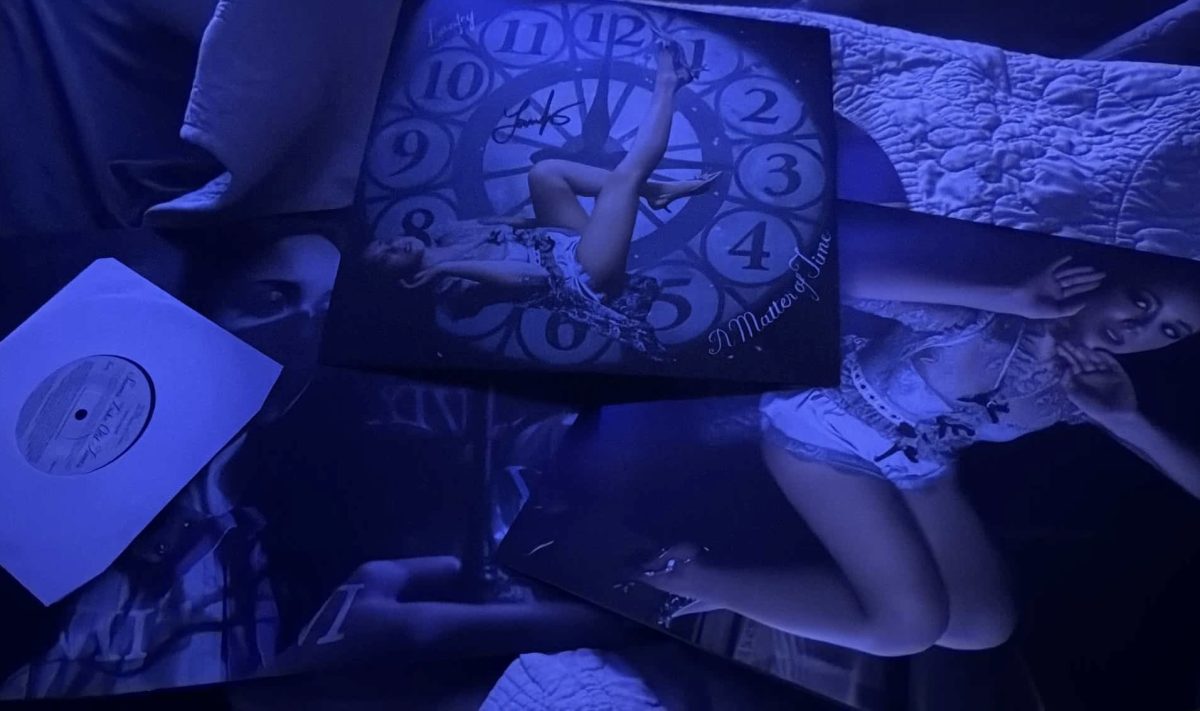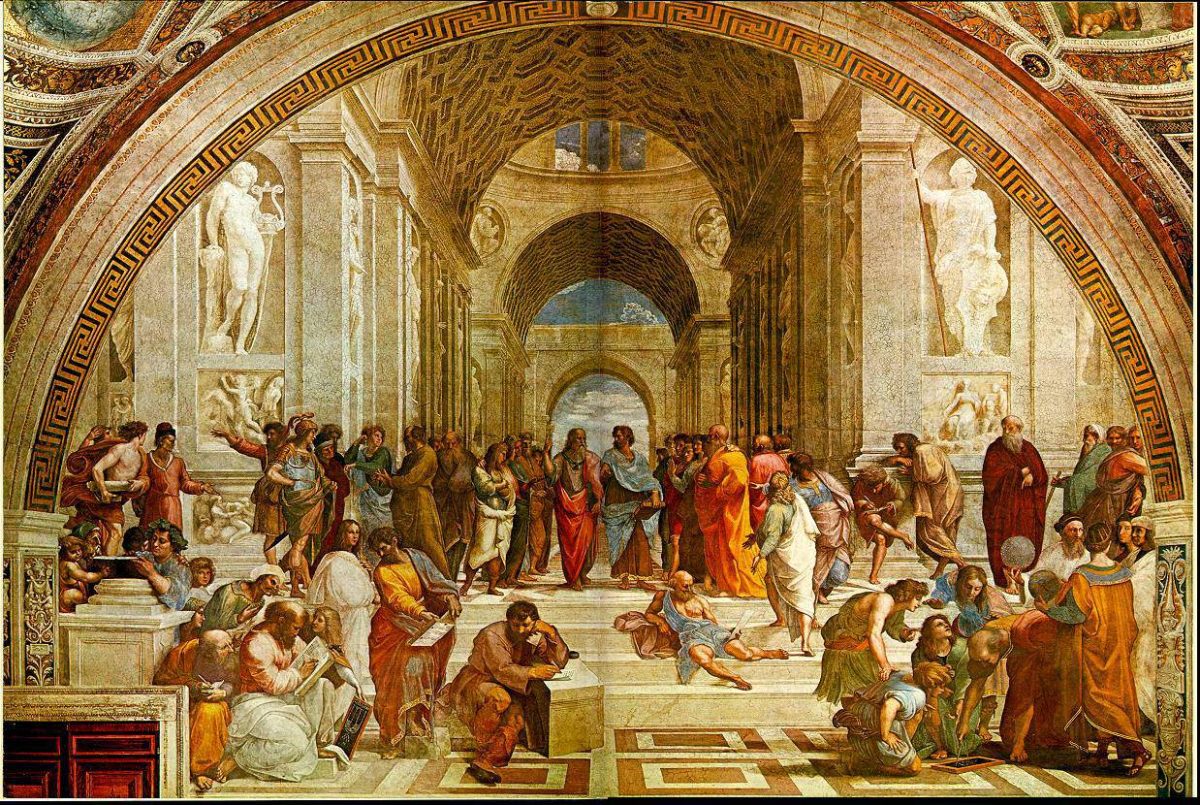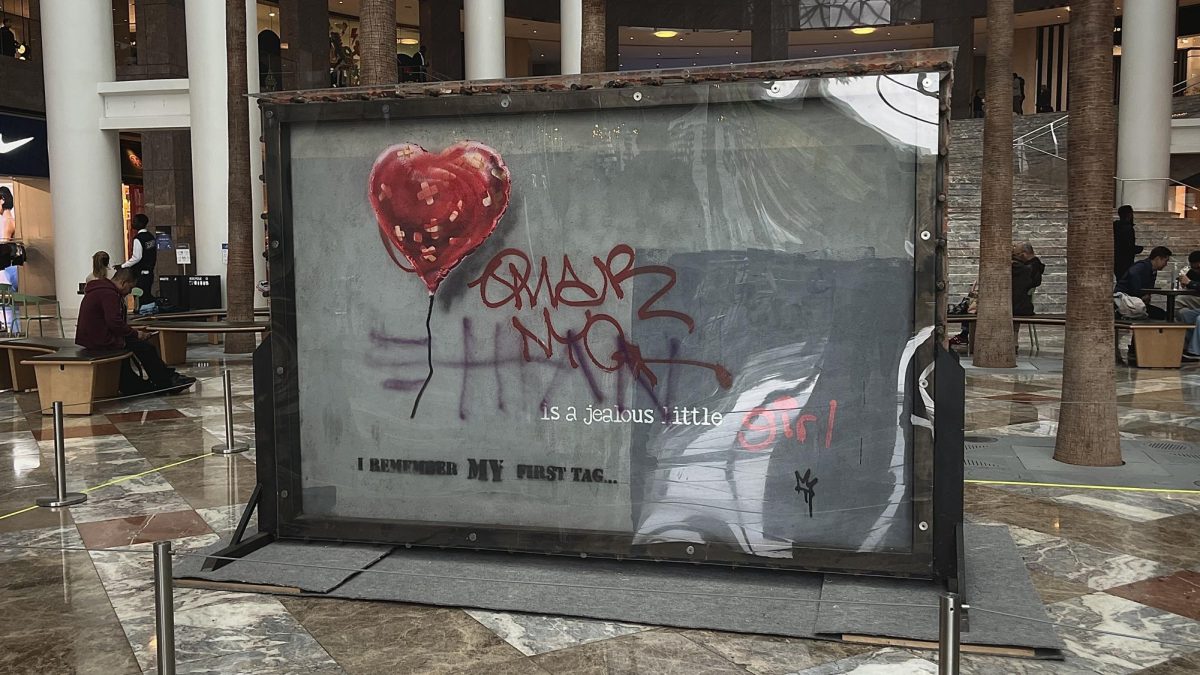On Nov. 5, The Mishkin Gallery’s artist-in-residence, Marie Angeletti, hosted an art tour around Baruch College’s Newman Vertical Campus. Angeletti, along with Alaina Feldman, the director of the Mishkin Gallery, guided students, faculty and other outside visitors in a fully immersive tour that showcased the various pictures, paintings and sculptures that adorn the walls of the building.
The Mishkin Gallery opened in Baruch College’s Administrative Building in 1983, as The Baruch College Gallery, and was later renamed after Baruch alumnus, Sidney Mishkin. The Mishkin Gallery has hosted over 300 works spanning different mediums like painting, photography and sculptures.
Marie Angeletti, who is the Mishkin Gallery’s first artist-in-residence, led the tour commenting on contemporary pieces around the school that students and faculty pass by everyday, but seldom stop and pay attention to.
This supports the purpose of the Mishkin Gallery, which is to amplify the pieces of artists, including Baruch’s students, that would otherwise become lost in the crowded and bustling hallways of the school.
The first stop of the tour was on the ground floor of the NVC. Situated high above the sitting areas by the escalator is Lynda Benglis’ 1989 sculpture, Salmson, of a stainless-steel flower.
Despite the contortions of the metal, the flower appears as if it’s made of billowing silk. “She’s depicting a flower with a very metallic shape,” said Angeletti, “which is the most gentle, she is doing a contradiction.”
Angeletti also explained that the dueling roles of femininity and masculinity are a major part of Benglis’ work, acting on a commentary of what are the acceptable roles both women and men can play in society.
To Angeletti, Benglis “did what she felt like. She was risky and pushed a lot; she kind of just wanted to be outrageous.”
After reflecting on Benglis’ work, Angeletti led the group to the Baruch Performing Arts Center. There, she discussed artist Edward Steichen, who was a prominent 20th-century photographer, widely known for curating photography exhibition, The Family of Man, which was viewed by upwards of nine million people.
Steichen’s photographs of high profile 20th-century figures including Winston Churchill, Marlene Dietrich and Joan Crawford are featured on the walls of the Performing Arts Center.
When discussing the photographs, Angeletti noted that “Steichen was able to generalize the human condition,” creating a common emotion reflected throughout all of his portraits.
Angeletti also noted the parallels between the glamorous
Hollywood life portrayed in Steichen’s photographs to the current elitism that exists in the industry today.
One of the final stops of the art collection tour was taking a look at some of the pieces that adorn the eighth floor hallways. There reside two 72×36 inch portraits from New York City-based photographer, Robert Longo.
The photographs come from Longo’s collection, Men in the Cities, and showcases the seemingly falling bodies of men and women dressed in business attire.
The positions of the bodies in the photos prompted Angeletti to pose the question, “are they dancing or are they dying?”
The youthful exuberance captured in the portraits allows for an endless array of meaningful interpretations, but Angeletti focused on the qualities of loneliness, aggression and spectacle that
come across to viewers. These emotions, Angeletti shared, are “all necessary and relevant to the work at hand.”
The gallery’s most recent exhibition featured Mexican artist, Minerva Cuevas with her exhibition entitled, Minerva Cuevas: DISIDENCIA.
The exhibition touched on both political and environmental concerns of future generations, while simultaneously critiquing the domineering presence of businesses in public affairs.
Commenting on the importance of having Angeletti at the Mishkin Gallery, Feldman stated that “it is necessary to showcase artists that reflect Baruch’s population well.”
Angeletti’s tour of the art collection around campus allowed the significance of these pieces and the artists that created them to shine and be known.
The messages of diversity and challenging social norms, along with the hidden depth to these pieces help to reflect the core values that reside in the hearts of every student and faculty member at Baruch.








